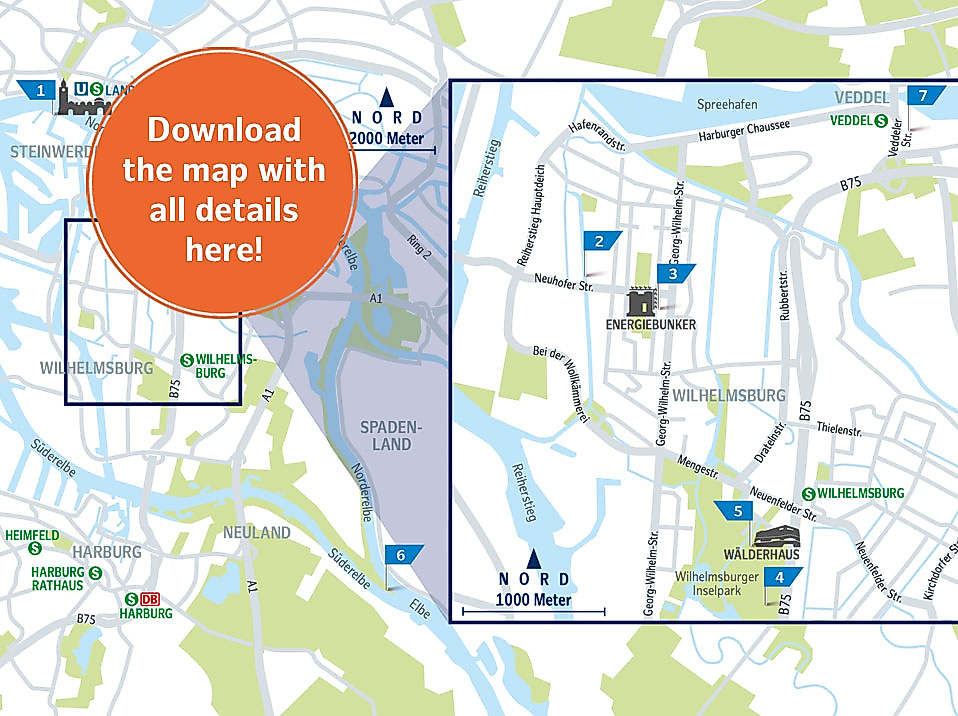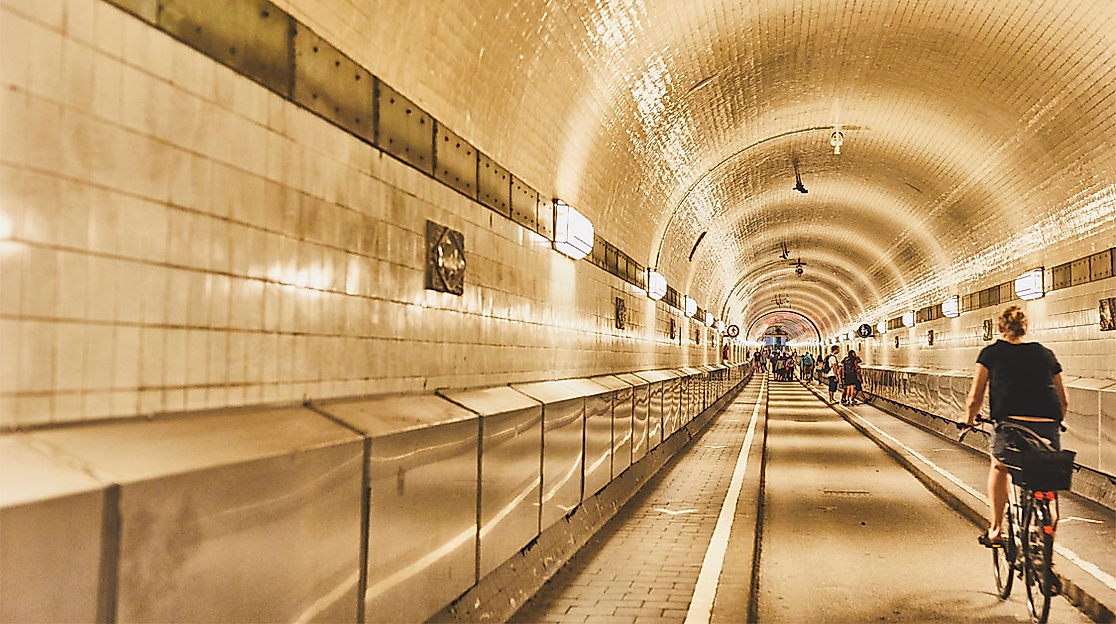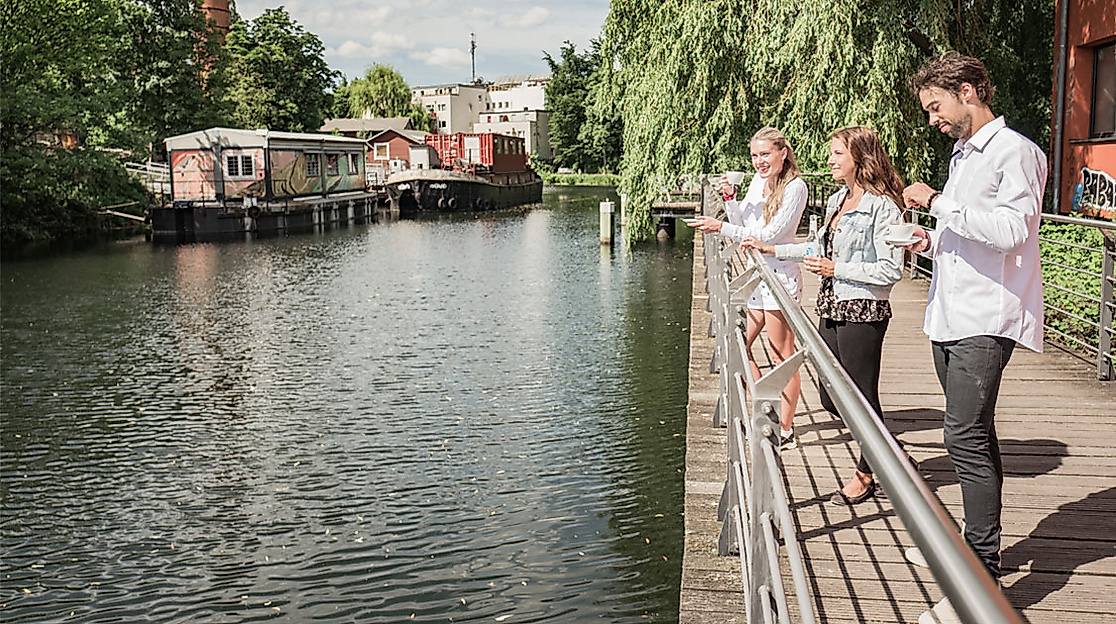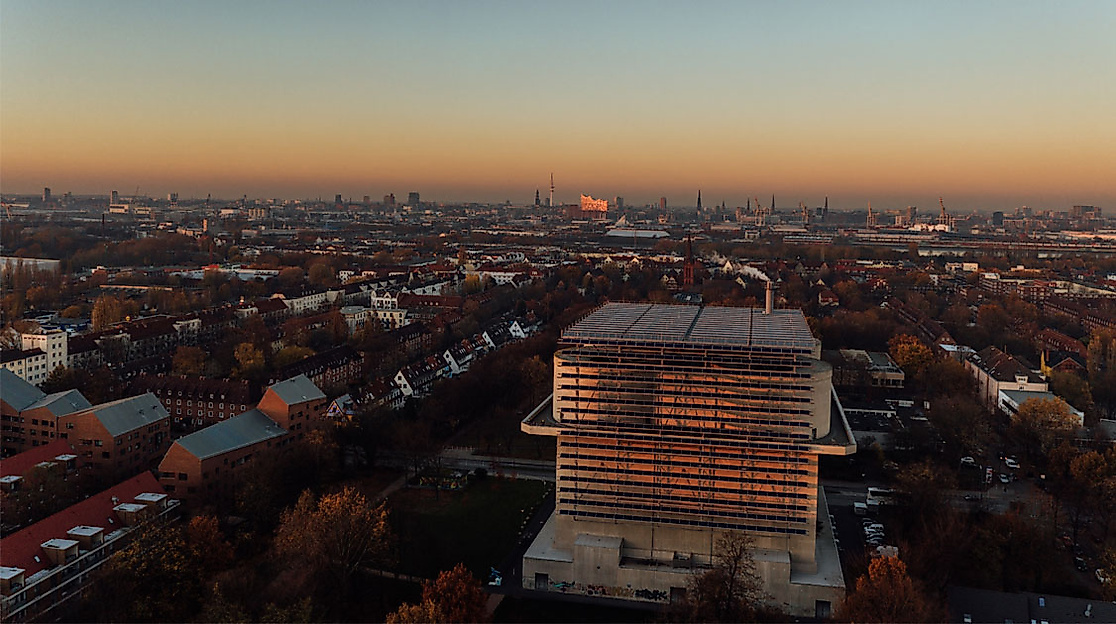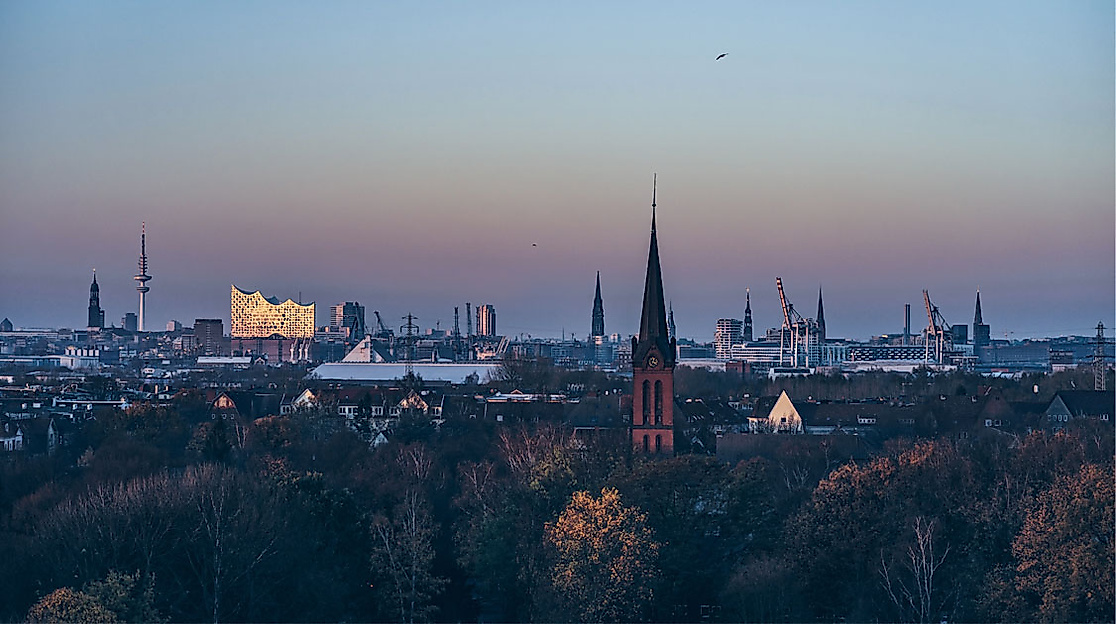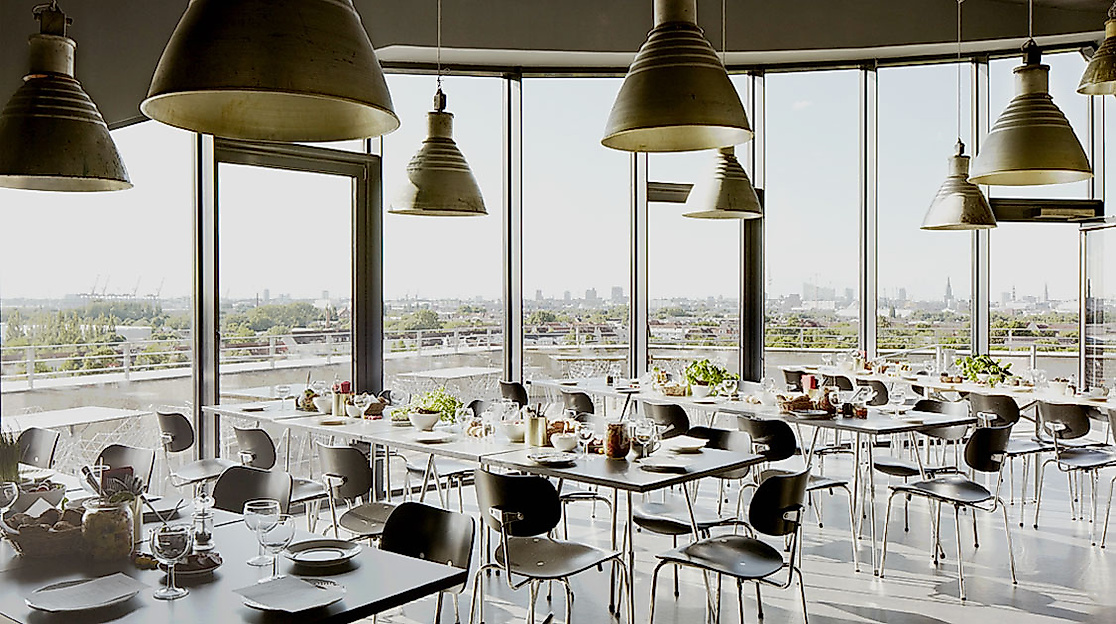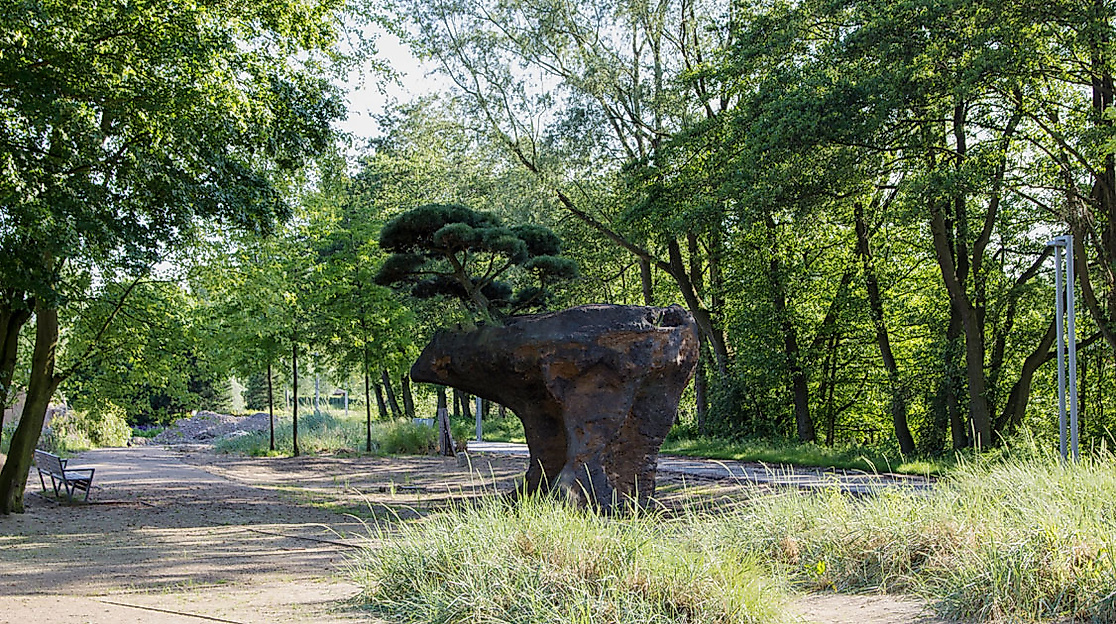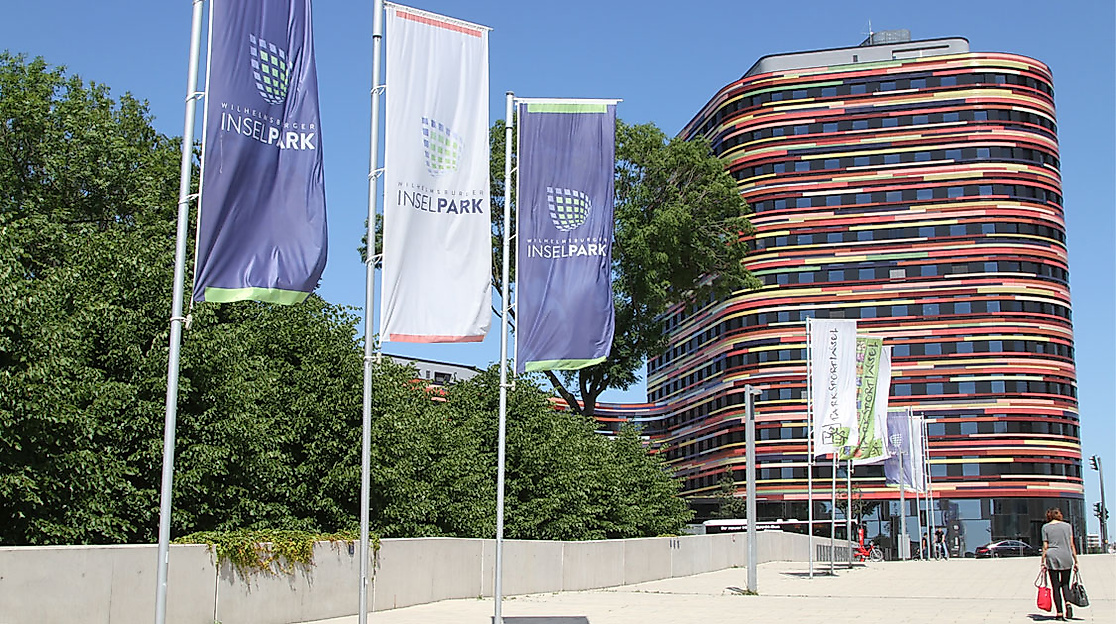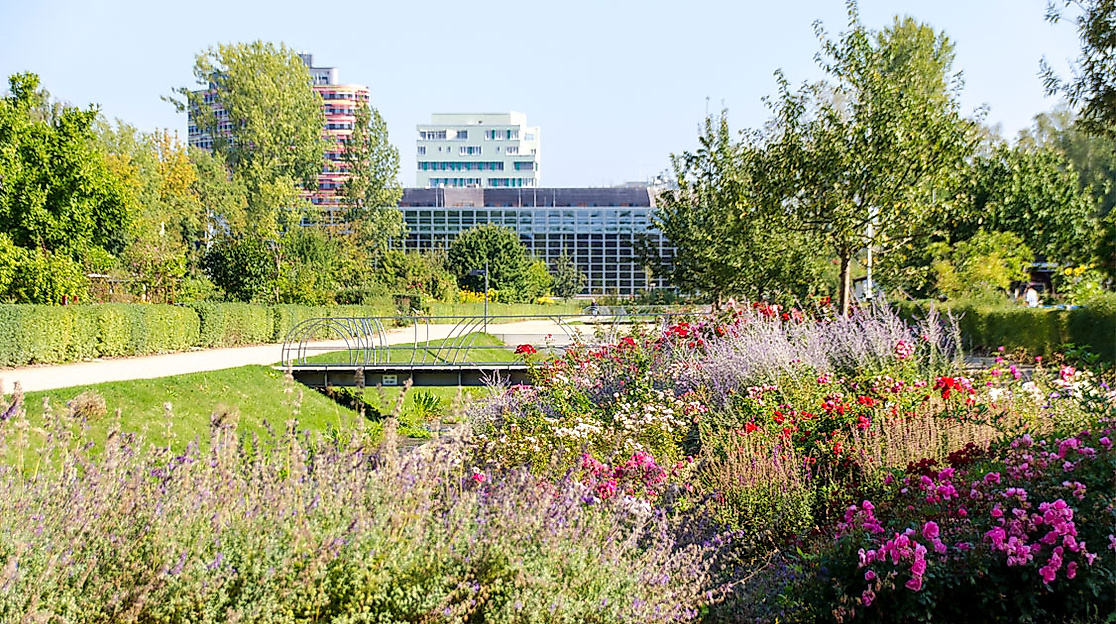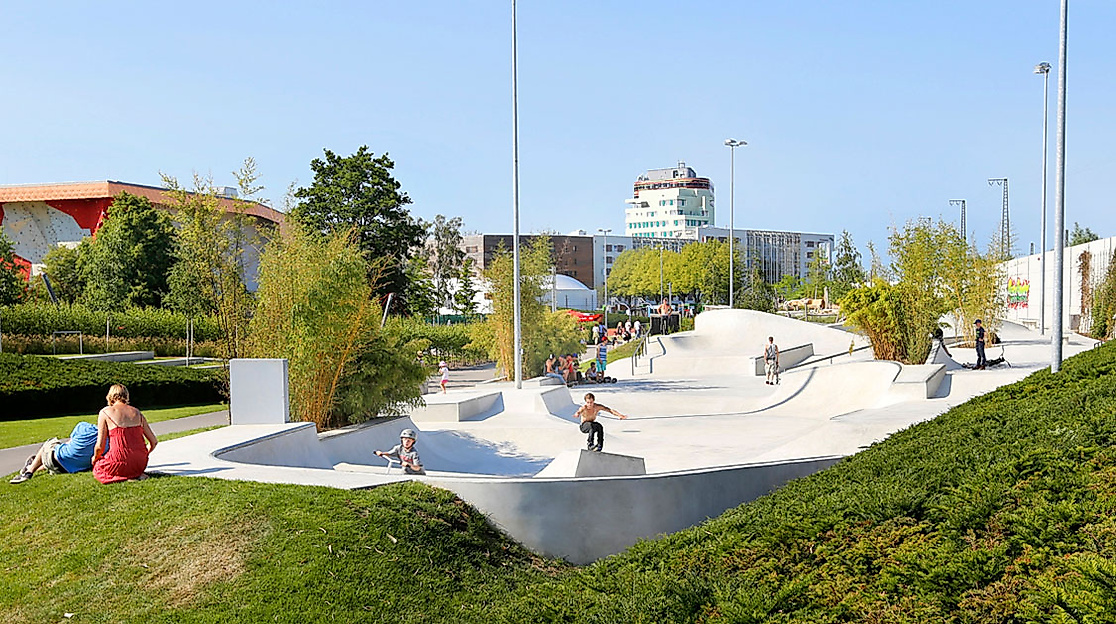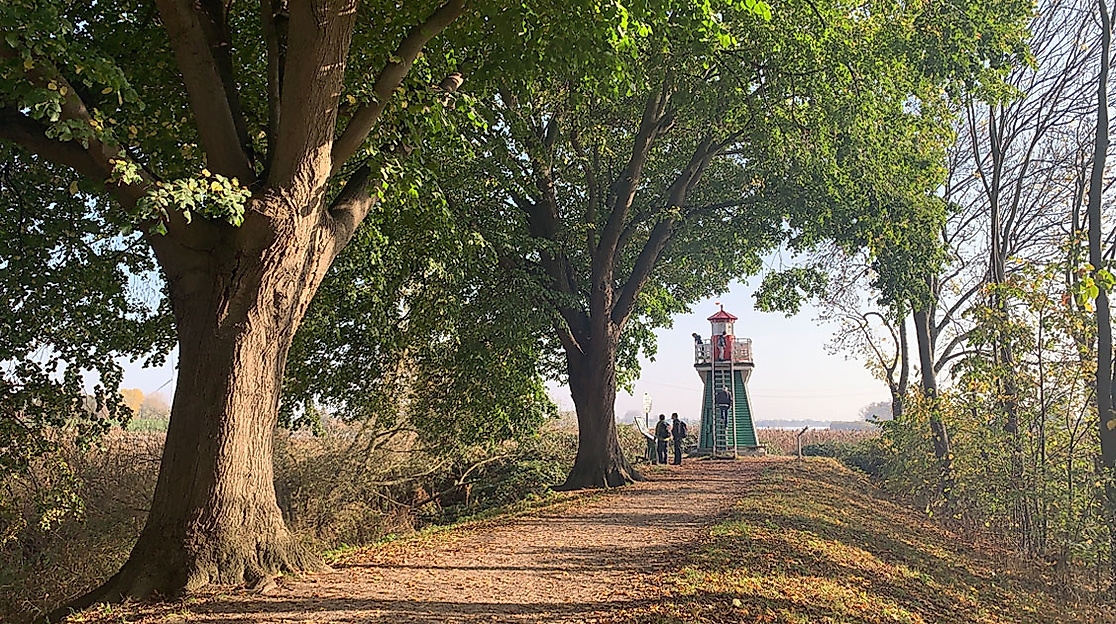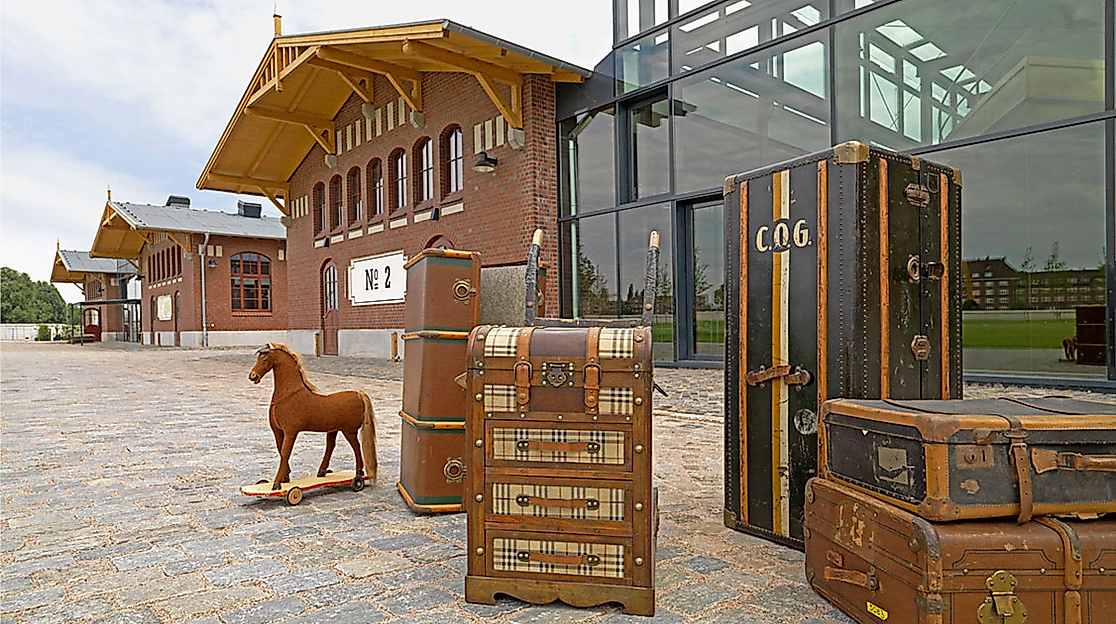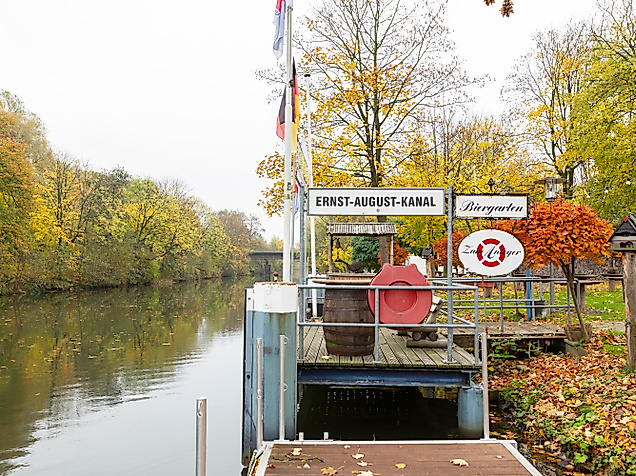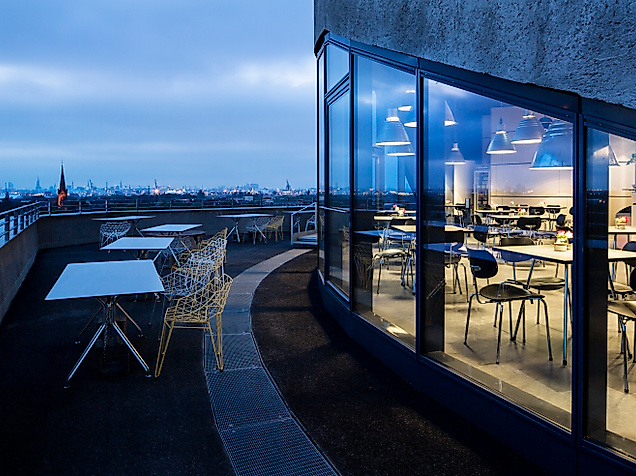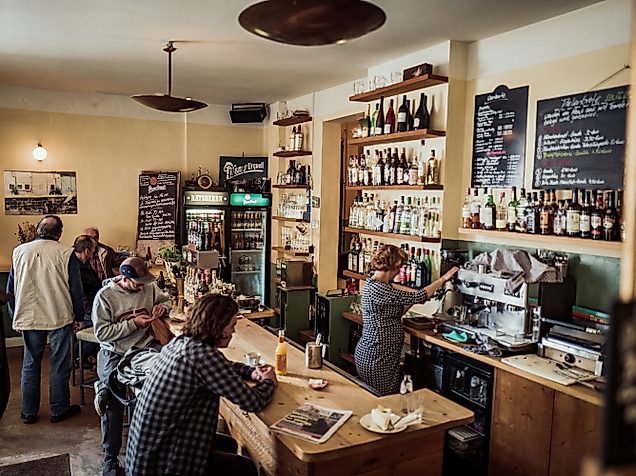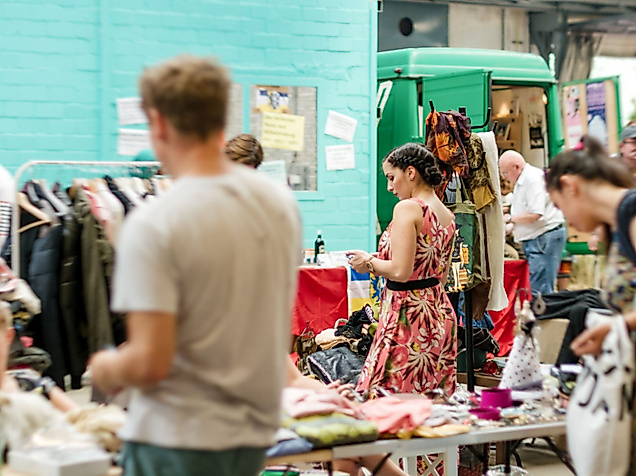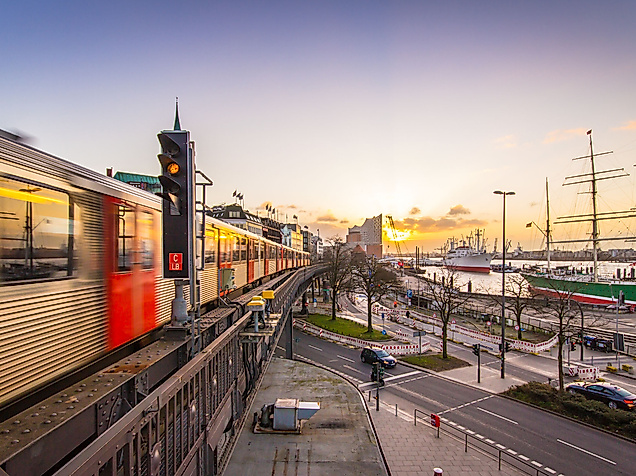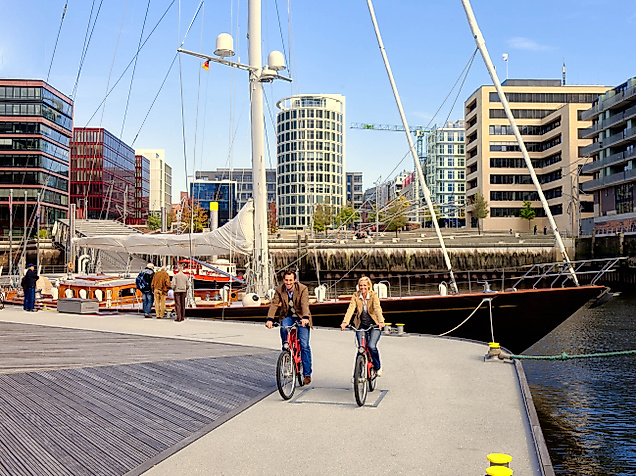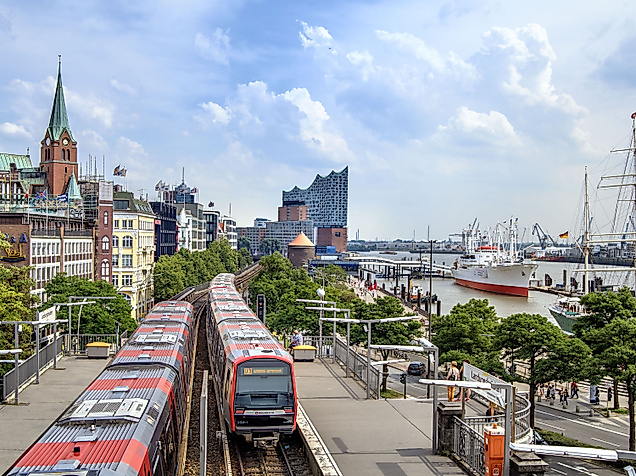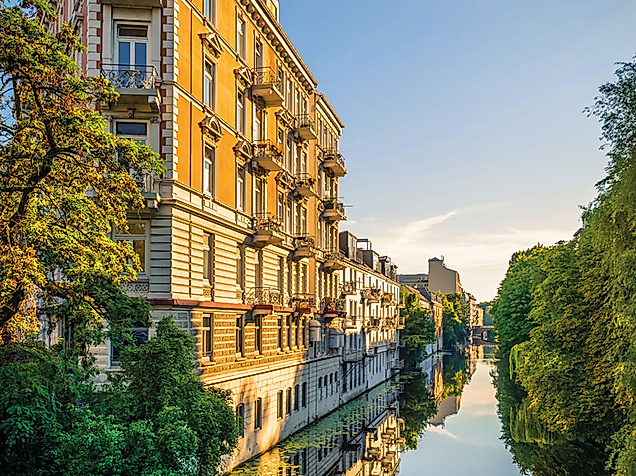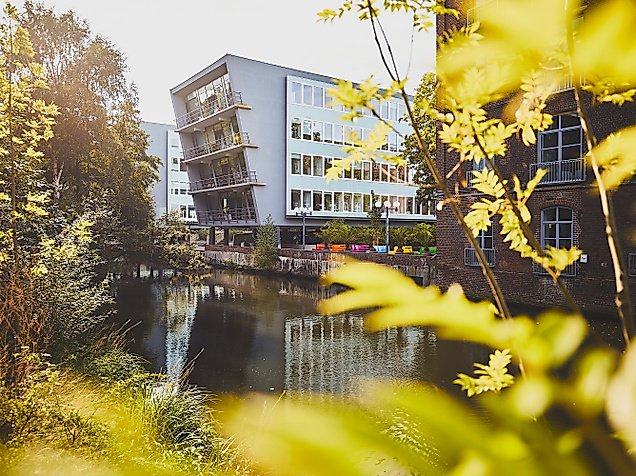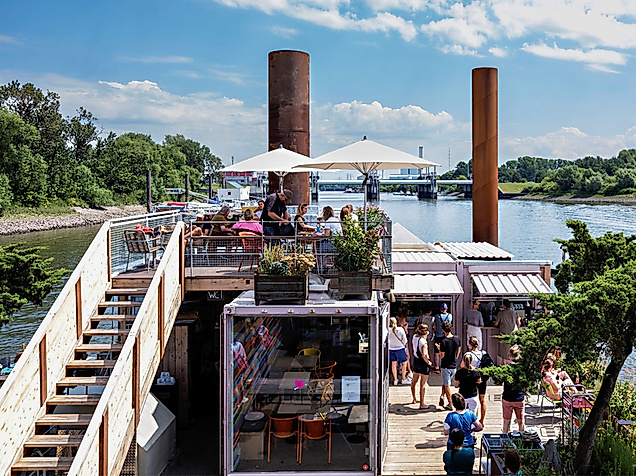
Urban nature route
- Moving in nature
- Out and about by the water
- Historical insights
The route in a nutshell
By bike, the distance (one-way) from Hamburg’s central railway station to Wilhelmsburger Inselpark amounts to roughly 10 kilometres; the route in Wilhelmsburg varies according to interest. The Inselpark is about 100 hectares in size and walking routes can be customised depending on your preferences.
The journey is the destination: from the city centre to Wilhelmsburg
Once you’ve grabbed a bike (StadtRad stations here), you head for the beautiful domed building of the Old Elbe Tunnel at Landungsbrücken. A lift will take you down to the tunnel. Built in 1911, this pedestrian and vehicle tunnel underneath the River Elbe has a length of 426 metres. On the south side of the Elbe, we recommend a little detour to the viewing platform at Bornsteinplatz, which offers an amazing view of Landungsbrücken and St Michaelis Church. Via Reiherdamm you now head towards the , which features an excellent cycle path on its east side. You are now in the district of Wilhelmsburg, where you can find a mix of students, artists and locals from all over the world, which gives the district its distinctive charm.
On the narrow banks of the Vering Canal, you can relax while enjoying a cool beer or a really good kebab on nearly every corner. If you prefer coffee and cake, you can head east about 5 kilometres after the tunnel and get onto Neuhöfer Strasse, where you can find the Wilhelmsburg Energy Bunker. A former air raid bunker, the building has been transformed into a unique power plant using solely renewable energies and featuring a large heat reservoir. At a height of 30 metres, the 360° viewing terrace of the “vju” café offers guests an impressive panoramic view of Hamburg. With its stylish furnishings and large, panoramic windows, the interior of the café is also well worth a visit.
Acquiring knowledge, strolling and exploring at Wilhelmsburger Inselpark
Continuing along the Vering Canal, you turn south-east after about 500 metres onto Georg-Wilhelm-Strasse, which, after another 1.5-kilometre cycle, will take you directly to Wilhelmsburger Inselpark. Situated at the northern entrance of the park, the WÄLDERHAUS offers visitors a very special experience: as well as featuring a hotel and a restaurant, an on-site science centre lets you explore the world of trees. Comprising 80 different stations, an interactive exhibition demonstrates how the earth’s ecosystem is affected by forests and woodlands. The complex relationship between forests, the environment and sustainability are illustrated in entirely new, fascinating ways.
Filled with lots of new knowledge and inspiration, you now set out to explore the Inselpark. The park is shaped by two focal themes: nature & gardens on the one hand, and sports & exercise on the other. In the “Haze & Fog” garden, for instance, you can relax as you are whisked away to a landscape reminiscent of the rainforest. The rose boulevard or the “Heimatgarten”, where local residents lovingly tend the flowers themselves, are more specific to the region. If you are still full of energy, the Inselpark indoor swimming pool, the HanseRock high ropes course, the elaborate skate park and the Nordwand climbing wall offer ample opportunities to get active. The Inselpark is also famous for its creative playgrounds, with names such as “Desert Waves” and “Mysterious Island”. Last but not least, you could also hop in a canoe and explore the park from the water – the choice is yours.
Extending your cycle towards the delta of the Northern Elbe and Southern Elbe
Did you know that Wilhelmsburg is a river island? The district is actually nestled between the Northern Elbe and Southern Elbe. If you would like to get to know the place where the Elbe splits into these two branches, you just cycle east from the park towards the Northern Elbe and then continue south along Moorwerder Hauptdeich, a dyke with a paved surface. After less than 8 kilometres, you will arrive at Bunthäuser Spitze. Here, in a beautiful nature reserve (Elbe kilometre mark: 609), you can find a little beacon that dates back to 1914. The wooden green tower is about seven metres high and allows you to enjoy a wonderful view of the Elbe. With a little luck, you may even spot one of the kingfishers that live there. If you’re still in an adventurous mood, you can cycle back along the Northern Elbe towards the city centre and take a last stop at the BallinStadt Hamburg Emigration Museum in Veddel. This is where, between 1850 and 1939, about 5 million people set out on their journey to the New World. At the centre of the exhibition are three reconstructed emigrant halls, in which the history of immigration and emigration is narrated across four different eras. You can also learn a lot about shipping magnate Albert Ballin, who founded the Hamburg emigration halls at the time.
Using the S3 or S31 S-Bahn lines from Wilhelmsburg or Veddel, it is but a quick journey back to the city centre. Alternatively, you can rent a StadtRad at one of the stations in Wilhelmsburg or Veddel and cycle back into town.
As a route planner, we strive to put together particularly diverse routes through Hamburg's most beautiful areas. Did you like our Urban nature route? We look forward to receiving your feedback. To discover even more unique places in Hamburg, take a look at our city map.
Gastronomy & Shopping on this Route
The Elbe islands of Wilhelmsburg and Veddel not only pay witness to Hamburg’s maritime history but also serve as examples of Hamburg’s diverse culinary culture. South of the Elbe, you can find a number of retail shops and food places of different types, making it the ideal location for experiencing restaurants and street food as you explore these neighbourhoods.
